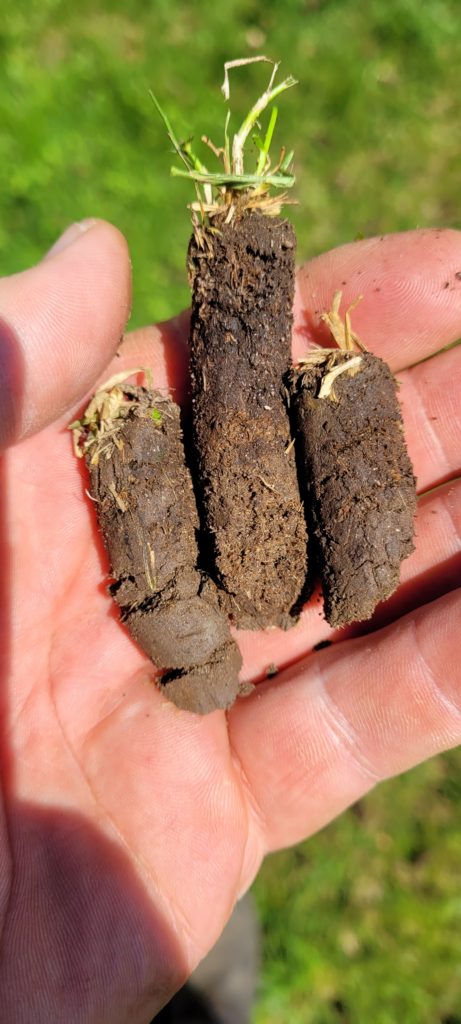Welcome to a journey into the heart of lawn care with a regenerative twist. Whether you’re a budding green thumb or a seasoned lawn care veteran, mastering the art of observation is key to understanding and nurturing your lawn. This guide delves into practical steps for assessing lawn health, emphasizing regenerative practices. From arrival to analysis, we equip you with the knowledge to transform your lawn into a thriving ecosystem.

- Site Arrival:
- Photographic Documentation: Begin and end each visit with a photo. This not only timestamps your arrival and departure but also plays a crucial role in monitoring the lawn’s progress over time.
- Boots on the Ground:
- Exploring the Terrain: Identify grass types, plant diversity, and assess the impact of various elements like trees, garden beds, and walkways.
- Feeling the Earth: Learn to read the soil’s story through your footsteps. Observe how the soil feels underfoot – from the tightness of well-rooted areas to the looseness of less healthy spots.
- Visual Insights: Kneel down and examine the details. Look for clues like worm castings and soil color that speak volumes about your lawn’s health.
- Core Sampling:
- Digging Deeper: Use a core sampler to gauge soil health, noting compaction, soil type, root depth, and more. Document these findings through photographs for a visual comparison over time.
- Understanding Soil Compaction with a Penetrometer:
- Measuring for Success: Ideal soil should register around 150 PSI for optimal root and microbial activity. However, at 300 PSI, compaction occurs. Here, water and air movement is hindered, leading to anaerobic conditions where harmful substances like alcohols, acetic acid, and formaldehyde can form, impacting plant health. Plant diversity can naturally alleviate this compaction.
- Conducting Infiltration Tests:
- Optimizing Watering: Use infiltration tests to refine watering schedules. Regular core samples can help monitor moisture levels and overall soil improvement.
- Considering External Factors:
- Seasonal and Weather Influences: Acknowledge how different times of the year and recent weather patterns play a role in your lawn care outcomes.
- Timing with Precision: Learn the significance of timing in lawn care, especially when measuring plant brix levels.
- Legacy and Past Management:
- Historical Context: Evaluate how previous care and construction have shaped your lawn’s current condition.
- Photographic Record Keeping:
- Visual Chronicles: Use your cellphone to take detailed pictures, creating a comprehensive visual log for each client. Store these images in specialized programs for easy reference and progress tracking.
Embarking on this observational journey transforms lawn care into an art form, blending science with a deep respect for nature. It’s about nurturing a living, breathing landscape that supports biodiversity and ecological balance. Remember, regenerative lawn care is a continual learning process, requiring patience, curiosity, and a keen eye for detail.
Note: Keep in mind that “A Guide to Regenerative Lawn Health Assessment” is an evolving resource, tailored to adapt to the specific contexts of your unique location. Don’t limit yourself to just these observations; allow your understanding to grow organically, just like the lush greenery you’re nurturing. Your lawn, your environment, and your community will benefit from your commitment to regenerative practices.
At Stangl’s Enviro Lawn Care, we’re more than just lawn care experts; we’re your partners in creating a sustainable future, one lawn at a time. Contact us for tailored advice or to learn more about our regenerative lawn care services. Keep observing, keep learning, and enjoy the journey to a healthier lawn and planet!